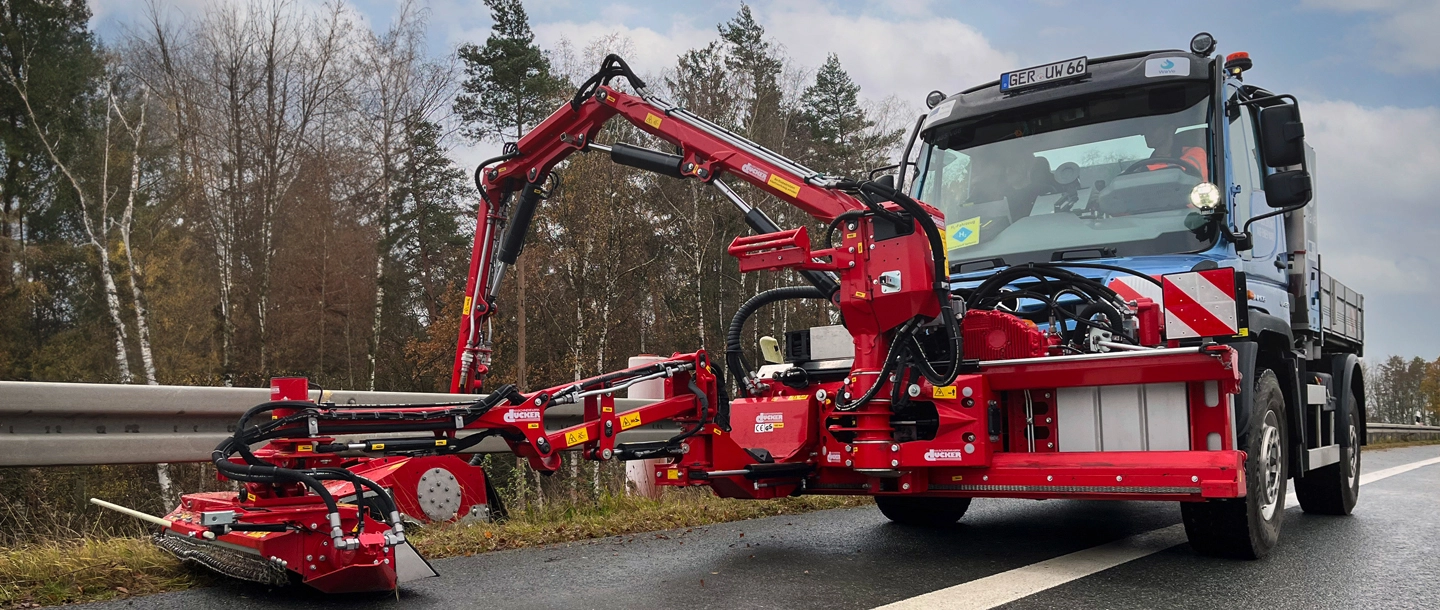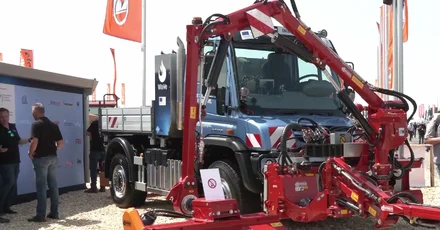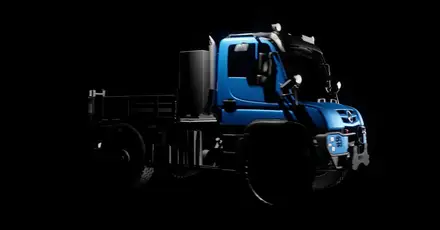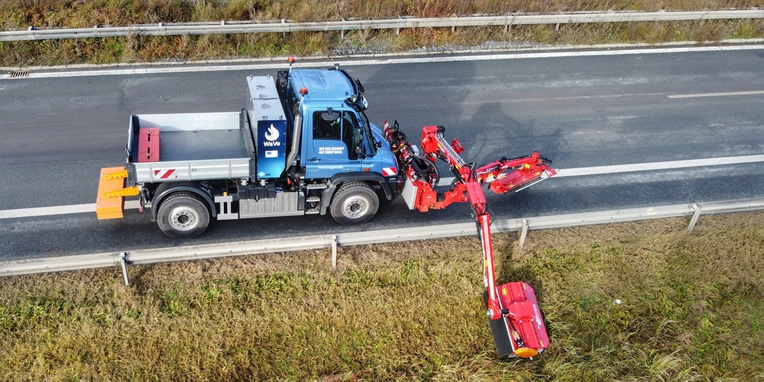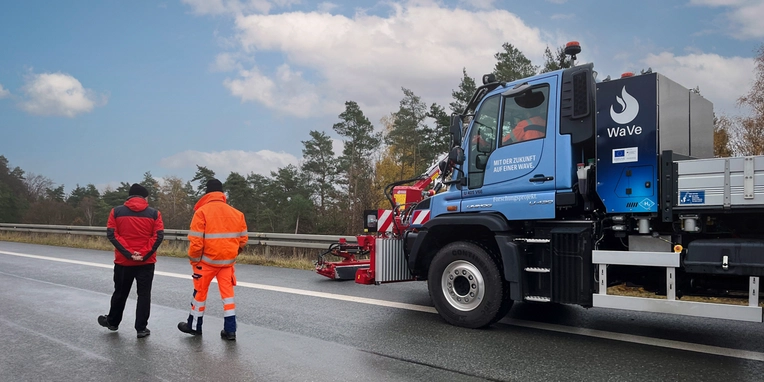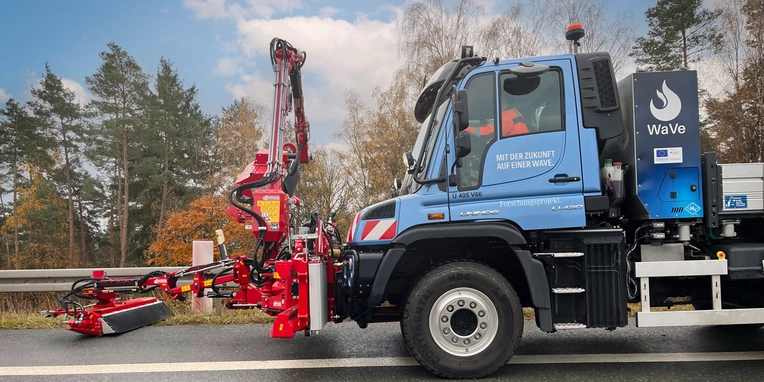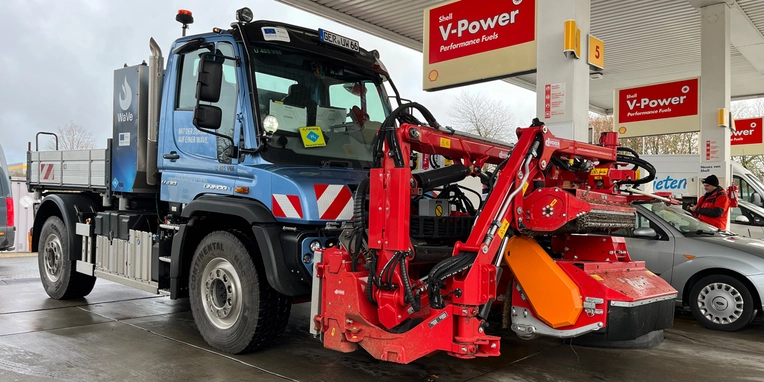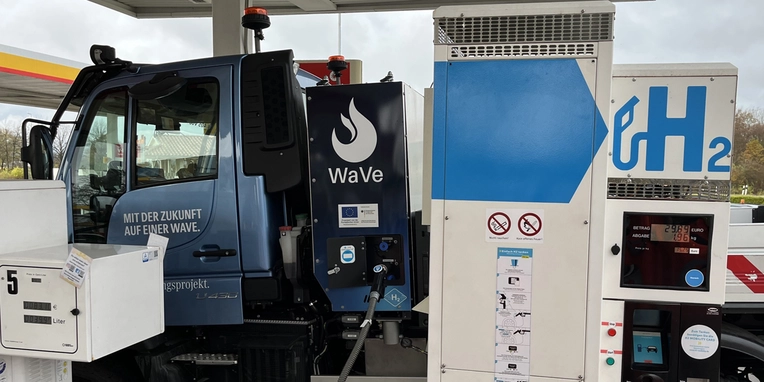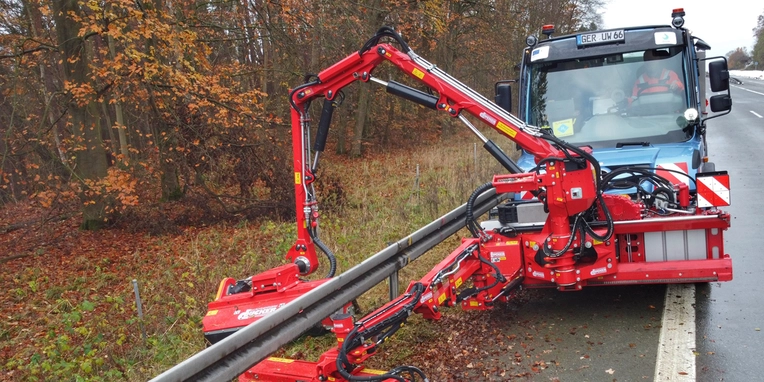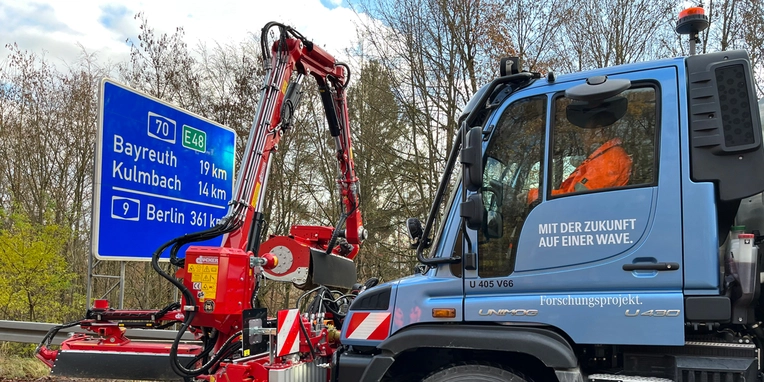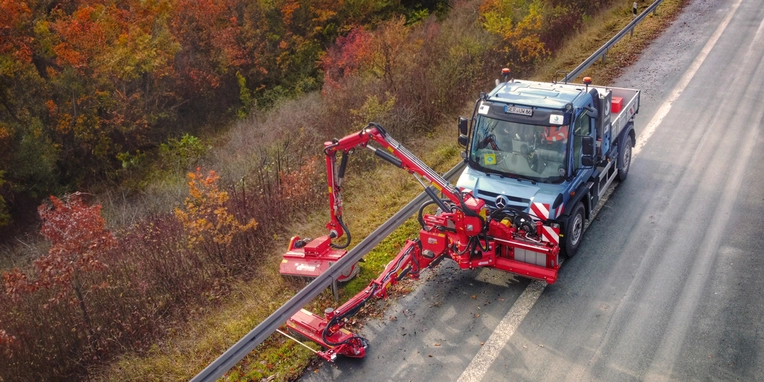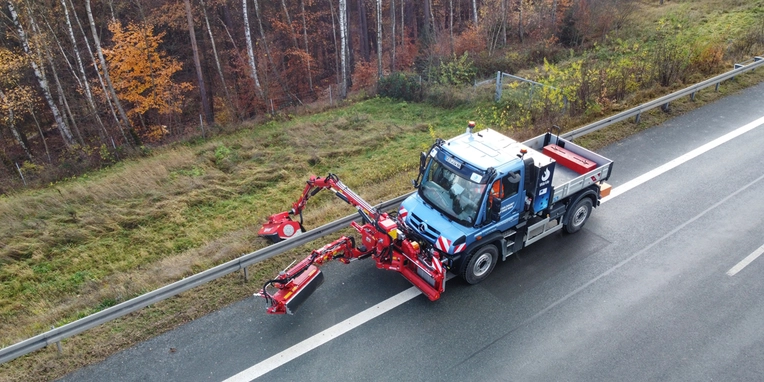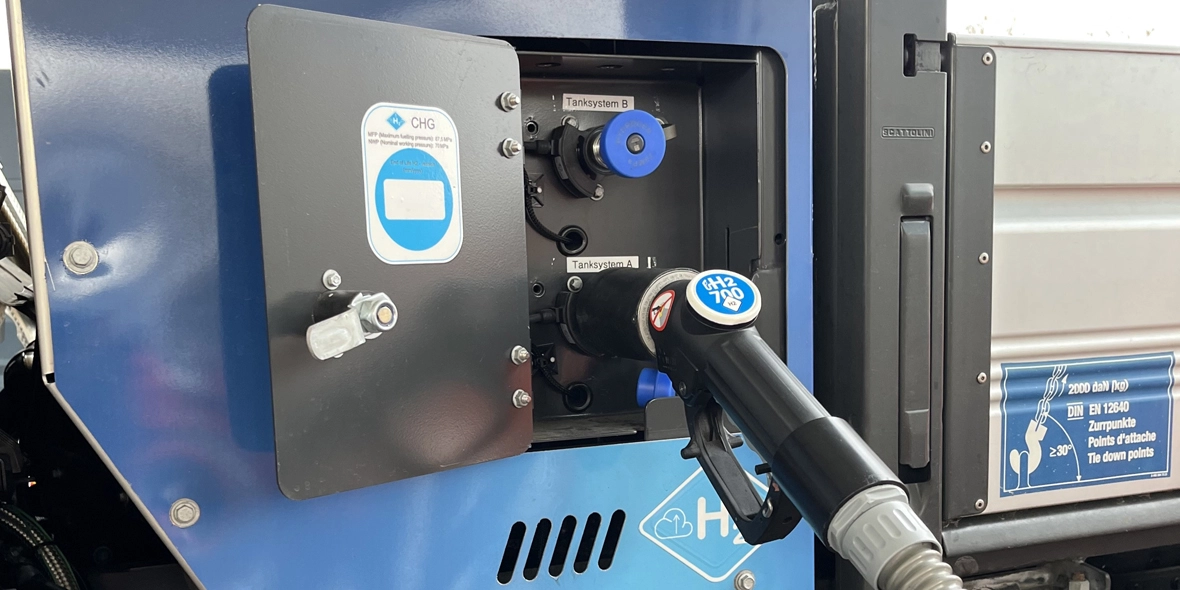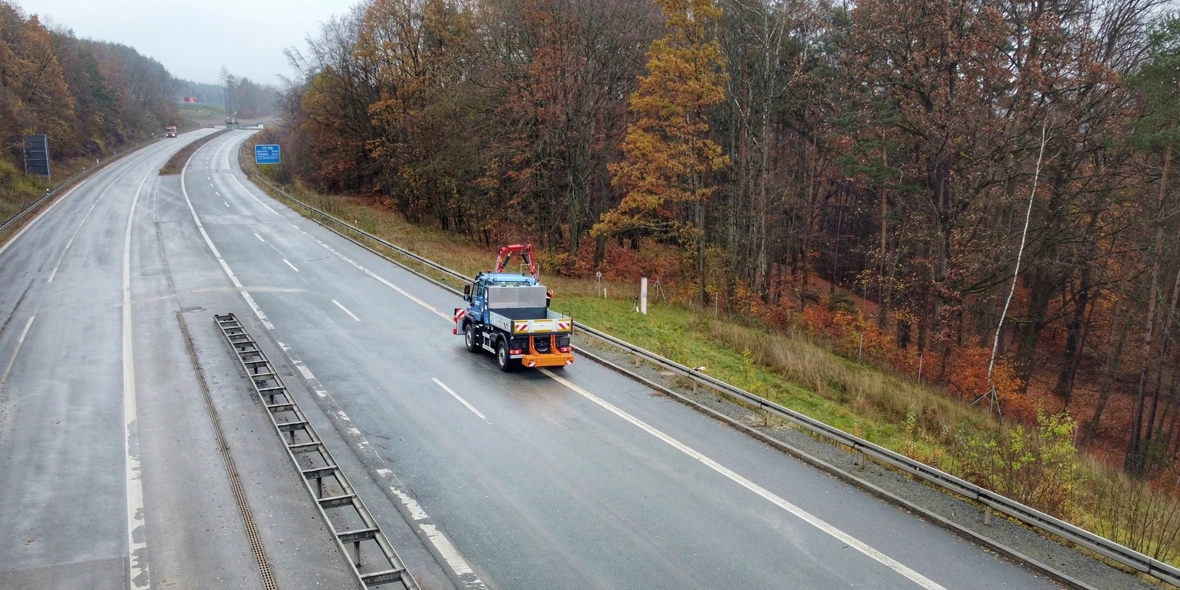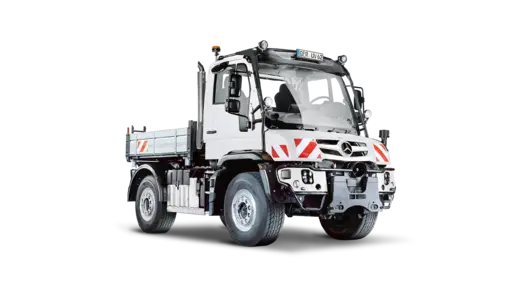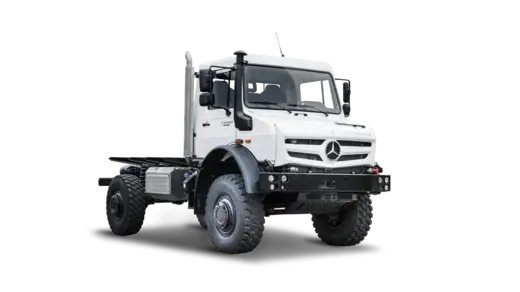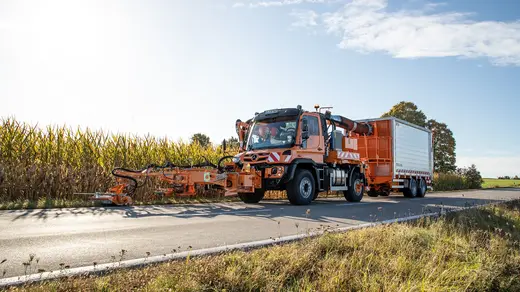Unimog WaVe: hydrogen pioneer in a practical test.
Times change, but performance remains performance. And decades of experience pay off, even in the context of the energy transition. This is what the Unimog WaVe, the hydrogen-powered prototype of the long-standing workhorse from Daimler Truck, stands for. The implement carrier has already proven its roadworthiness. However, the Unimog WaVe also makes a good impression as a work tool – as demonstrated by its mowing operations in wintry Bayreuth with Autobahn GmbH.
Climate-friendly mower.
The Unimog WaVe is on its way to Upper Franconia, heading for Bayreuth. But not to the famous Wagner Festivals, but to a place that seems much less spectacular at first glance: a decommissioned section of the motorway. But on this route between Bayreuth and Bamberg, something more spectacular is happening than you might think.
Namely one of the first work assignments with a hydrogen-powered Unimog. A small step for Daimler Truck, a big one for the automotive industry.
After a two-year project period, we are in practical testing with the first Unimog prototype.
Franziska Cusumano, CEO, Mercedes-Benz Special Trucks
More precisely, the trip to Bayreuth was a test drive by the vehicle developers with employees of Autobahn GmbH in order to collect data for the hydrogen combustion engine in real operation. For this purpose, the Unimog WaVe was equipped with a front mower consisting of two mowing heads.
On the motorway section near Bayreuth, the prototype modelled on the Unimog U 430 implement carrier must prove itself against its diesel-powered counterparts. Namely as a mobile mower. At low temperatures and with a demanding terrain profile.
